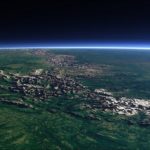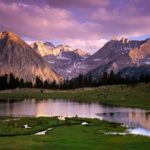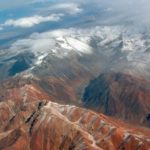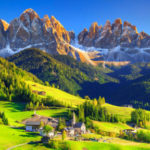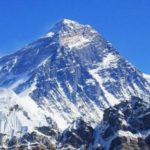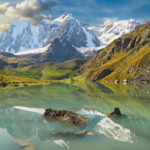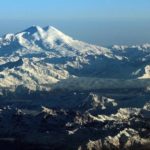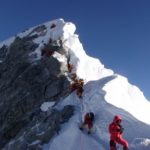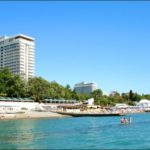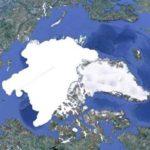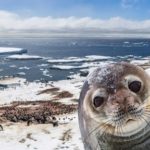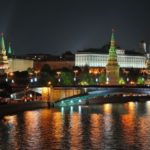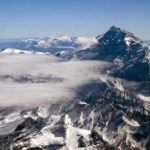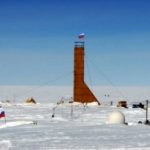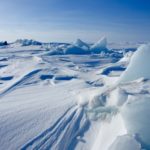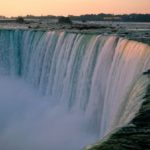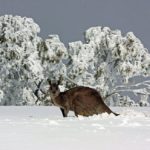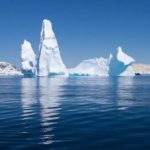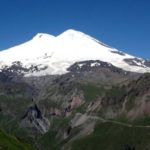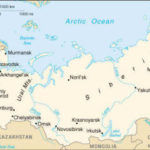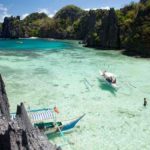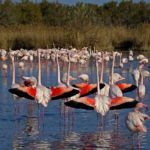Array of vinson
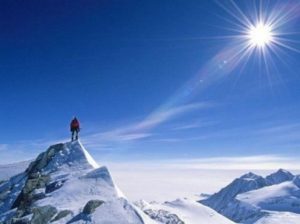 The Vinson Massif is located about 1,200 km west of the South Pole. In principle, this is the highest point of the entire mountain system in the Ellsworth Mountains. This mountain range stretches for more than 20 kilometers, and its width is about 13 kilometers.
The Vinson Massif is located about 1,200 km west of the South Pole. In principle, this is the highest point of the entire mountain system in the Ellsworth Mountains. This mountain range stretches for more than 20 kilometers, and its width is about 13 kilometers.
All approaches to the Vinson massif are a continuous glacier, in some places up to 4000 meters thick. And only the rocky peaks of the mountains rise above this white desert.
In January 2015, 195 years have passed since the discovery of Antarctica by Russian sailors Mikhail Lazarev and Fadey Bellingshausen. The Russian business community Leaders Club decided to celebrate this event in a rather peculiar way.
Under the auspices of the Russian Mountaineering Federation and the support of the Seven Summits Club and Red Fox, the Strategic Initiatives Agency, a decision was made from December 20, 2014 to January 5, 2015 to organize an expedition of Russian entrepreneurs to Antarctica with an ascent to the Vinson massif – the highest point of Antarctica – 4897 m.
The expedition includes members of the Leaders Club, Russian businessmen, politicians, press representatives, photojournalists, doctors and experienced climbers, in total about 200 participants from 40 regions of Russia. The purpose of this expedition is: the promotion of sports, including mountaineering in the business community, as well as attracting wide attention to the problems of Russian Antarctic research. Expedition route: Moscow – Chilean city of Punta Arenas – Antarctic base “Union Gletcher” – base camp on the Vinson Massif – climb to the peak and then back to Moscow.
The project program includes such questions as: radio communication sessions and a tele-bridge from the immediate locations of the expedition with various regions of Russia, as well as with the International Space Station; testing new Russian high-tech equipment in extreme conditions; the final goal is the installation of the State Flag of Russia at the highest point of Antarctica.
The Leaders Club already has experience in conducting similar projects. From July 7 to July 17 of this year, an expedition of the “Club of Leaders” was organized on Mont Blanc – 4810 m – the highest point in Western Europe. The expedition was very successful. Climbing the peak was dedicated to the pilots of the Normandie-Niemen aviation regiment who participated with Soviet pilots in the military operations against fascist Germany during the Second World War. In memory of this, at the peak of Mont Blanc, the State flags of Russia and France were installed.
But Mont Blanc is still Europe, where the expedition was under the constant attention of many international organizations and, if necessary, almost any help could be provided to the expedition members. Well, the Vinson Peak is Antarctica – the Ice Sixth Continent, where after the base camp on the Vinson Massif, the expedition should rely mainly on its own forces, although of course they will follow this expedition from the Antarctic Research Station of Antarctica, but the capabilities of these stations are very limited.
Like all Antarctic peaks, the Ellsworth Mountains were discovered from the air in 1935; they were noticed during the flight by the American explorer Lincoln Ellsworth. But only in 1957 this mountain system was examined and the necessary measurements were taken. In honor of the discoverer, the mountains were called Ellsworth.
A separate array of these mountains was named the Vinson Massif in honor of Carl Vinson, the US Congressman from the state of Georgia who spent many years proving Congress the need for Antarctic exploration and ultimately secured funding for this project. As a result, it was America that became the first country to thoroughly explore the Sixth Continent. And in honor of this persistent man and competent politician, the highest point of this massif and the whole of Antarctica also bears his name.
The first to climb Vinson’s peak were the Americans. In 1966, the US National Geographic Society and the American Mountaineering Club organized a peak expedition. On December 18, 1966, a group of 10 American climbers led by Nicholas Clinch were the first to climb the highest point of Antarctica. There were no particular problems during the ascent, and the mountaineering world was somewhat disappointed. The only serious problem during the climb was the low temperature, to minus 50 degrees Celsius, and a strong wind.
For the second time, an international scientific expedition of 3 people led by the German scientist Peter von Gezicki climbed Vinson’s Peak. The expedition was a Soviet Antarctic explorer Vladimir Samsonov, who set the USSR flag at the peak.
